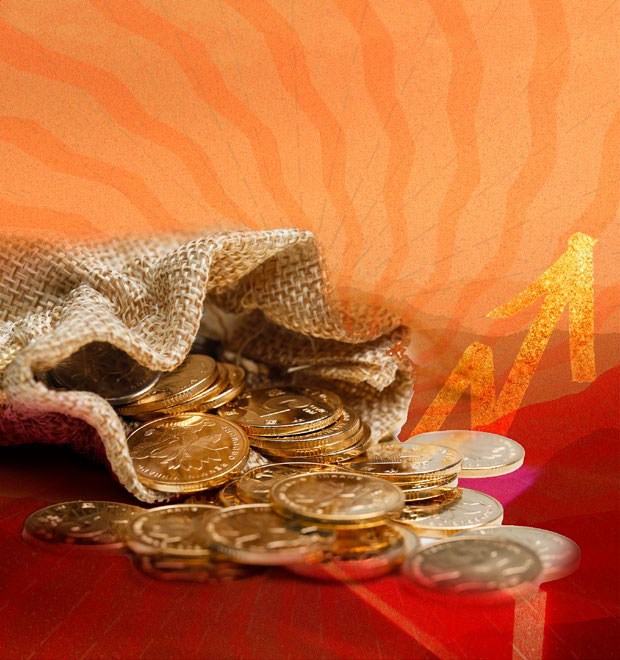From World Gold Council’s latest campaigns to gold as a performer in 2022, Somasundaram PR, Regional CEO, India, at World Gold Council talks about how India being one of the leading consumers of gold can also become a price setter and increase its per capita consumption

India imported 1,050 tonnes gold worth $55.7 billion last year, a figure that has double since 2020. Gold import last year surpassed the highest record in 2011. The World Gold Council (WGC) has been taking several steps to promote gold jewellery amidst consumers – for one, they partnered in July last year to work collectively to make gold jewellery more relevant and contemporary, leading to a consequential shift, to make it more relevant and desirable. WGC also launched ‘You are Gold’ consumer campaign to make gold more appealing to a younger audience. In November 2021, WGC launched its first documentary series ‘The Golden Thread’, showcasing gold’s impact on humanity’s past, present and future. The five-episode series explores the metal’s history, cultural relevance and technological uses.
Q WGC LAUNCHED THE ‘YOU ARE GOLD’ CAMPAIGN RECENTLY TO LURE THE INTEREST OF A YOUNGER AUDIENCE. TALK TO US ABOUT THE INTENT OF THE CAMPAIGN AND ITS IMPACT THUS FAR
ANS: Deriving from insights that indicate an opportunity to increase resonance for gold amongst the youth in the country, the ‘You are gold’ campaign aims to evoke emotions and creative self-expressions through heart-warming stories of celebratory moments. The campaign attempts to ingrain gold in the millennial culture through relevant stories that revolve around relationships and milestones that deserve to be cherished with gold. The essence of the campaign - every moment that makes you, YOU, deserves to be celebrated with gold - is captured effectively with the phrase 'You are gold'. The campaign infuses a modern meaning in the classic narrative of gold, creating a new age culture that respects and embraces tradition but reinterprets it in contemporary ways – akin to the true millennial approach.
Through this campaign, World Gold Council aims to increase awareness, relevance and adoption of gold jewellery amongst young Indian consumers by building a meaningful context of role of gold jewellery in their contemporary expressions. In terms of the impact, there has been an overwhelming response from the industry and we are hoping that millennials and genz would look at gold jewellery more favourably in times to come
Q WGC RECENTLY AIRED THE MINI-SERIES, THE GOLDEN THREAD. HOW DO YOU SEE SUCH EDUCATIONAL FILMS IMPACTING THE MINDSET OF CONSUMERS AND INVESTORS?
ANS: The Golden Thread documentary is an interactive five-episode series that aims to increase the relevance and consideration of gold in the minds of investors and consumers alike. Through the documentary, World gold council delves into the metal’s history, cultural relevance and technological uses. It features experts and stories from around the world while exploring gold’s worldchanging impact. This initiative marks a first for the brand, intended to educate its consumers and investors on the capabilities, societal impact and investment value of gold far beyond bars and coins alone. It aims to inform audiences of gold’s critical role in our way of life, especially now as our ambitions for a cleaner, safer and more advanced future on Earth are stronger than ever before.
Q INDIA IS THE LARGEST IMPORTER AND CONSUMER OF GOLD IN THE WORLD -- WHAT KIND OF AN IMPACT DOES THIS HAVE ON THE GLOBAL
GOLD TRADE?
ANS: India ranks number two in gold consumption worldwide, however there is almost negligible domestic mining (less than 2 tonnes). As a large consumer of gold with an inherent trust in the long term value of gold, India plays a key role in the global market in sustaining gold demand and its price trajectory. Our studies throw good insights on how income influences demand majorly in the long term and inflation expectations and price drive sentiment in the short run. As a country entering another phase of growth, household incomes are set to grow fast and therefore long term demand looks positive.
Q DESPITE BEING A LARGE IMPORTER, INDIA’S PERCAPITA DEMAND FOR GOLD IS RELATIVELY LOW, WITH THE DEMAND BEING HIGHLY INCOME-ELASTIC AND PRICEELASTIC. WHAT STEPS CAN INDIA TAKE TO INCREASE PER CAPITA CONSUMPTION?
ANS: While India is the second largest consumer of gold, its per capita consumption is low due to short term challenges such as declining household savings rate and agricultural wages. Income and price may be the key long-term drivers of demand, but it is impacted by a variety of other factors in the short term. From the consumers point of view, a strong culture of conservatism and savings is embedded in gold buying, particularly at the lower end of the socio-economic scale. Gold has played a strong role: a wealth preservation asset, as a hedge against inflation, enhancing social security for women, in collateralising lending and ensuring credit to access to savings and credit by rural households. With economic growth and rising prosperity, this demand could rise. Policies curbing this demand will only strengthen the grey market which will keep gold savings illiquid and meaning little for mainstream financial channels. Gold in any form is an investment and has to be carefully nurtured so it remains an active rather than a passive economic saving. Some of the steps that can be implemented towards increasing per capita consumption are:
Be the first to comment